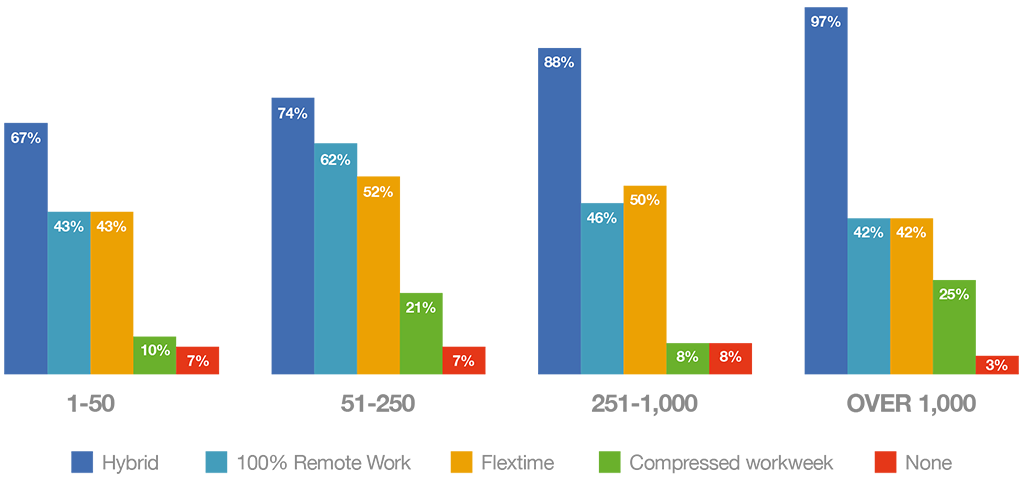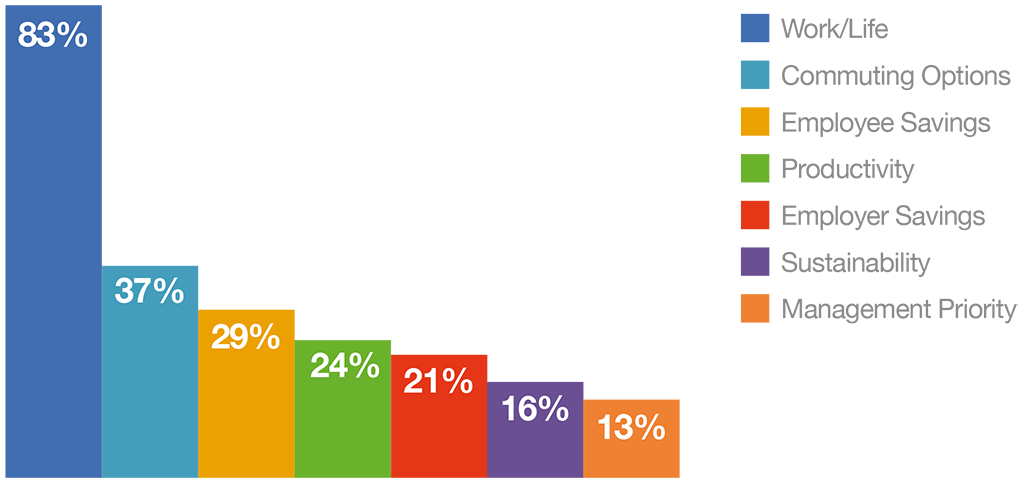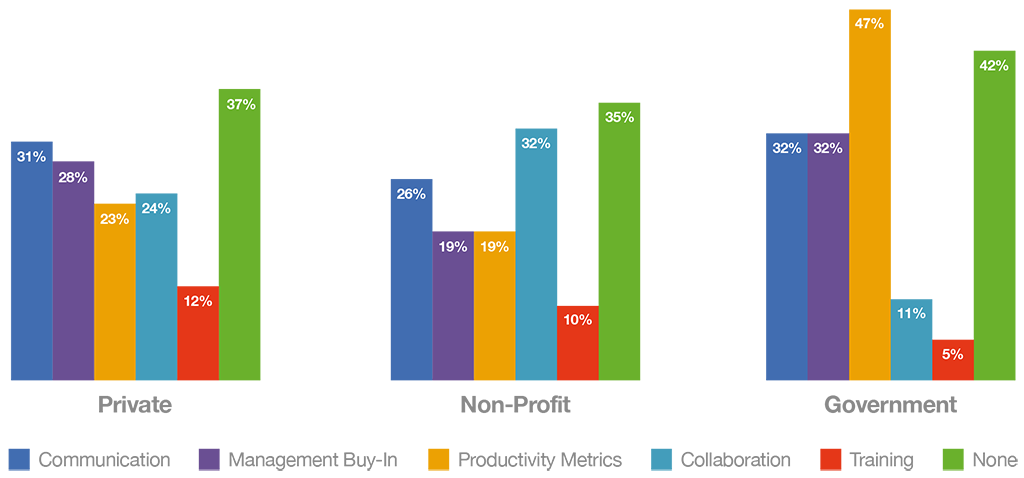Georgia Commute Options wanted to hear how flexwork is working for employers in our region. In March, we asked our colleagues at SHRM-ATL to let us know. We surveyed 136 small- to medium-sized businesses (up to 1,500 employees) across a variety of industries in the private, public and nonprofit sectors. Here’s what we discovered!
Flex remains a priority
Metro Atlanta continues to be highly supportive of flexwork. It has been embraced not just by private employers but state and local government organizations as well who are not federally mandated to return to the workplace. GCO’s snapshot shows higher rates of adoption, with 8 in 10 of surveyed employers supporting flexwork compared to 67% of US firms overall. The Flex Report also finds Fortune 500 companies have made the biggest shifts for more days in office, with 24% requiring employees back full time, bringing them more in line with most mid-sized companies (22%).

Chart: Flexible work arrangements by employer size
Atlanta employers widely embrace flexwork.
- Hybrid (80%)
- Fully remote (49%)
- Flextime (47%)
- Compressed workweek (17%)
Top benefits of flexwork
Flexible work arrangements are as varied as the benefits they deliver to employers and their teams. Our survey found that the No. 1 reason organizations supported flexwork was for employee morale and need for work-life balance, followed by desire to offer better commuting options and employee savings on such things as gas and parking.
Atlanta employers widely embrace flexwork.
- Hybrid (80%)
- Fully remote (49%)
- Flextime (47%)
- Compressed workweek (17%)
Top benefits of flexwork
Flexible work arrangements are as varied as the benefits they deliver to employers and their teams. Our survey found that the No. 1 reason organizations supported flexwork was for employee morale and need for work-life balance, followed by desire to offer better commuting options and employee savings on such things as gas and parking.

Chart: Benefits of flexwork
These benefits also deliver significant returns for employers, such as reducing churn by as much as 35%, increased productivity as a result of increased focus time and major savings. In fact, remote work has the potential to save employers $11,000 per half-time telecommuter per year in reduced absenteeism, turnover, utility costs and increased productivity.
3 days in office
Structured hybrid work arrangements set guidelines for when employees can work from home and when they must be at the workplace. Our survey found that locally 56% of companies require employees to work on-site at least three days a week and only 8% require them to come in 5 days. Nationally, among those companies offering structured hybrid schedules, 66% require 3 days in office, a 13-point jump from 2024. As far as choosing which days to work, 4 in 10 Atlanta area employers surveyed leave it to employees to choose the days that work best for them. Mondays (20%) and Wednesdays (18%) are the most popular days to be at the workplace, followed by Tuesdays (12%) and Thursdays, limping in at 7%. Fridays didn’t even make the list. Go figure.
Flexibility is not without its challenges
Offering flexible work arrangements is a smart business strategy and an increasingly popular employee benefits trend. Allowing employees to choose when, where and how they work leads to measurable gains in engagement, productivity and morale, and recruitment and retention efforts. Yet despite these benefits, flexwork is not without its challenges.
Some of the challenges of flexwork differ by organization type.
- Nonprofit: Employers in the nonprofit sector (and who also offer more flexibility than other employers) said that collaboration was by far their biggest challenge. These organizations also were the least likely to offer compressed workweeks (9%) that allow employees to work longer shifts in exchange for an extra day off.
- Public: For government agencies, being able to show the effective use of human resources was the biggest challenge with nearly half (47%) saying they struggled with productivity metrics. Productivity measurement includes such things as time management, completion of work, quality of work, goals and expectations, and more.
- Private: Private employers, on the other hand, reported that communication was their biggest hurdle (31%).

Chart: Flexwork challenges by organization type
While flexwork continues to grow, it needs to be managed with intentionality. Flexible work arrangements rely on a foundation of clear expectations, policies and communications channels, which are essential to helping leaders and teams understand expectations and ensuring successful outcomes. Empowering leaders with the right technology and tools to enable them to measure and monitor performance, the right policies and guidelines to communicate expectations and the support to lean into difficult conversations are solid strategies that can ensure the success of hybrid work.
Learn how Clayton County Water Authority overhauled its hybrid work program!
Eager to set up your hybrid program for success? Need training for your managers and teleworkers? The Georgia Commute Options FlexWork consulting team has decades of experience in helping companies customize their remote and hybrid work programs to best suit their unique circumstances.
Email us at telework@gacommuteoptions.com.
